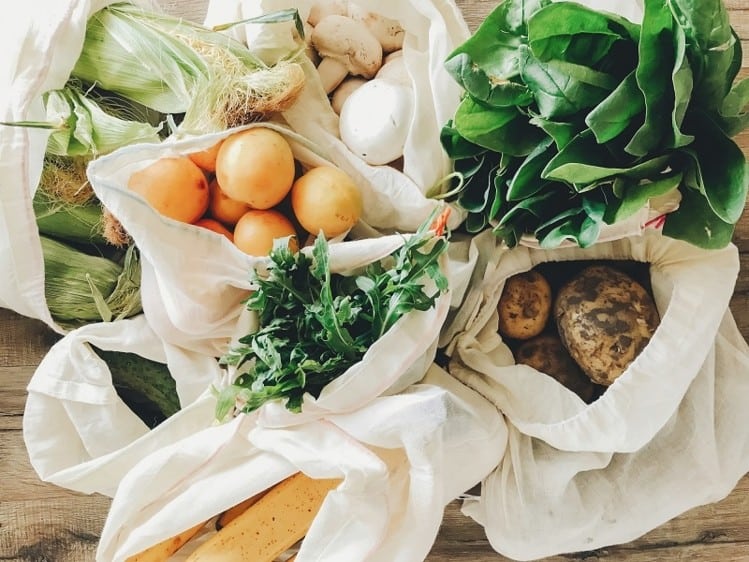Hackathon
Submission
Sindhu Sindar
ProducePathway
Policy proposal for collaborative food distribution networks utilizing existing nationally-accessible tools and organizations, and partnerships between community centers, hospitals, farmers, and distributors. Objectives are the identification of in-need communities to provide mobile markets and CSA boxes, as well as subsidization strategies to serve low-income areas.

Project
Proposal
Using both Food Source and Food Insecurity heat maps, we can overlay the data to identify dynamic Distribution Networks. I am proposing for this policy model to begin in Los Angeles county and expand nationwide depending on local government plans. Implementation at the county or city level allows for increased accuracy in data and evaluation of community needs. Potential sources of Food Insecurity data and heat maps include:
- USDA Food Access Research Atlas
- LA Health Department Food Insecurity and Health Access
- ThinkHealth LA
Potential sources of Food Source data and maps include:
- Food Oasis
- EPA Food Opportunities Map
Once these networks are identified, policymakers can establish partnerships with community centers and hospitals, to create mobile markets or CSA box provision. The benefits of utilizing community center or hospital resources are both that they have superior knowledge and history of interaction with their local community and operate during the weekend. A main obstacle for working families that can not utilize food banks and similar resources is the fact that most of them only operate during working hours. In establishing these partnerships for mobile markets, barriers of location and timing may be minimized.
The provision of CSA boxes also provides public support for local farmers, as they constitute a “share” of their production and they have power over what is included in boxes based on which crops are truly optimal to produce. These networks can be initial steps in bridging gaps in the supply chain by establishing more connected relationships between farmer and consumer, and eliminating crop surplus more effectively based on what farmers are actually growing.
To subsidize produce and CSA boxes for low-income neighborhoods, there are several strategies to potentially employ:
- Partnerships both with the distributing community organizations as well as third parties such as Veggie Rx and Double-Up Food Bucks are historically successful models for providing coupons and discounts to low-income cities.
- Revenue from full-priced CSA boxes offsets subsidized boxes, given that boxes provided to low-income areas contain surplus crops that are better distributed than discarded or plowed back into the field.
- Grants and financial support from the local government or nonprofit organizations; the State of California recently budgeted a one-time $20 million in Emergency Food Assistance during COVID-19 conditions.
Similar partnerships have found success in Easter Massachusetts at the World PEAS Food Hub and CSA subsidization programs through various nonprofits in New York City. Collaborative models between social service, healthcare, and food distribution organizations offer sustainable solutions to food insecurity as community needs shift over time.
Team
Members
Already registered before? Login first to Apply!
Register now & submit your request to join this team!
Join Sindhu Sundar's Team!
Solution
Details
What region(s) or state(s) do you currently have operations in?
None
Is there a specific region or state where you plan to focus on for this project?
Focus in LA county, and then expand across US and potentially internationally
How far developed is your proposal?
I have an idea but it needs to be developed, 6-12 weeks until ready for implementation.
Is there any legal protection for the solution?
Don't know
Latest
Submissions
Humanner – Collective Holistic Social Innovation Ecosystem Management
By Janos Deak
By the Humanner Cooperative Social Business Ecosystem model give financial self-sustainability and emerge the digital infrastructure to connect informal market, unlock the power at the bottom of pyramid, and deliver economic prosperity.
“A charity money has only one life. A Social Business money can be invested over and over again.” (Muhammad Yunnus)
Linking science and technologies to communities of our global society. Humanner’s social R&D focus on interweaving new models so smoothly and seamlessly into the currently prevailing system, that it will not be perceived as opposition, but rather as a higher quality competitive model, which gradually replaces the old one.
Our method is to create a high-quality example while showcasing our understanding of what it means to be human.
Humanner’s system work with a MULTI FUNCTIONAL holistic multisolving approach so that make the investment more impactful. Single investment of time and money – Defined as a way of solving multiple problems with the multisolving approach brings together stakeholders from different sectors and disciplines to tackle public issues in a cost-efficient manner
Humanner unite the two biggest volunteer sectors the Open Source and the Non Profit sector into a Social Business Innovation Ecosystem. We aim to explore how open source software, open source hardware, digital maker practices and open design can be effectively used by local communities to fabricate their own tools, make sense of their environments and address pressing environmental problems.
Digital Surplus Management System
By Kubra Orak
Supported by UNDP to reach SDGs, Whole Surplus provides technology solutions to create value out of unsold inventory.[bc1] Placing technology at the heart of a crucial issue as food waste, Whole Surplus offers holistic and digital solutions to any type of surplus food, that is eligible for human consumption, animal feeding, recycling or landfilling and matches them with the right partner who offers the highest financial and social value. Moreover, the platform provides a data analytics dashboard to reduce waste at the source. With the help of the technology and network that is created, the aim is to reduce partners’ food waste-related carbon emission by 50% and to reach the zero-landfill goal.
COVID-19 Getting Farmers’ Products to Food Banks with Federal Help
By Michael CheKim
Too many crops from too many farms are going to waste as farmers cannot get distributors to buy them. Too many food banks are going dry, and too many restaurants and their staff are idle. As Chef Jose Andres has asked in a recent eTown Hall, “Why can’t the Federal government pay restaurants to make food for food banks?”




